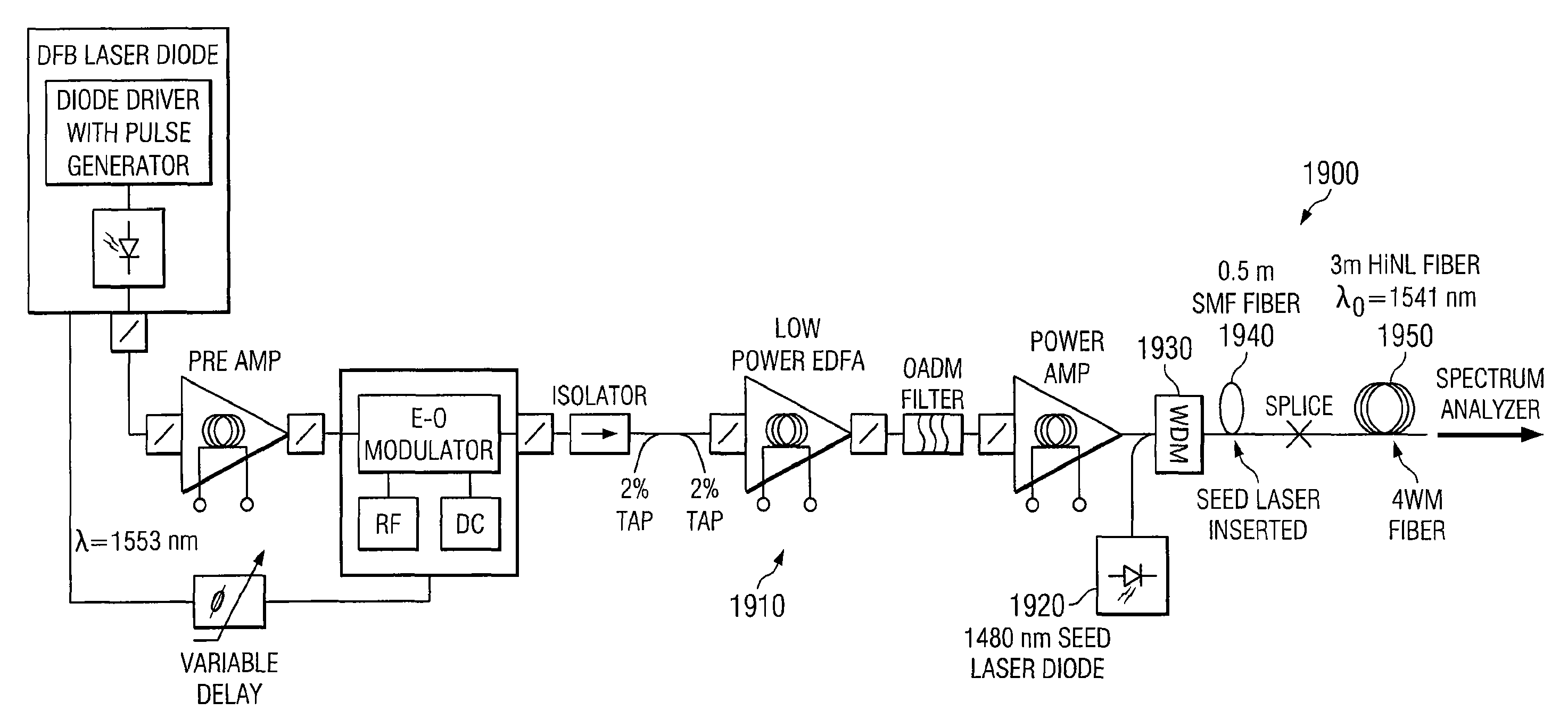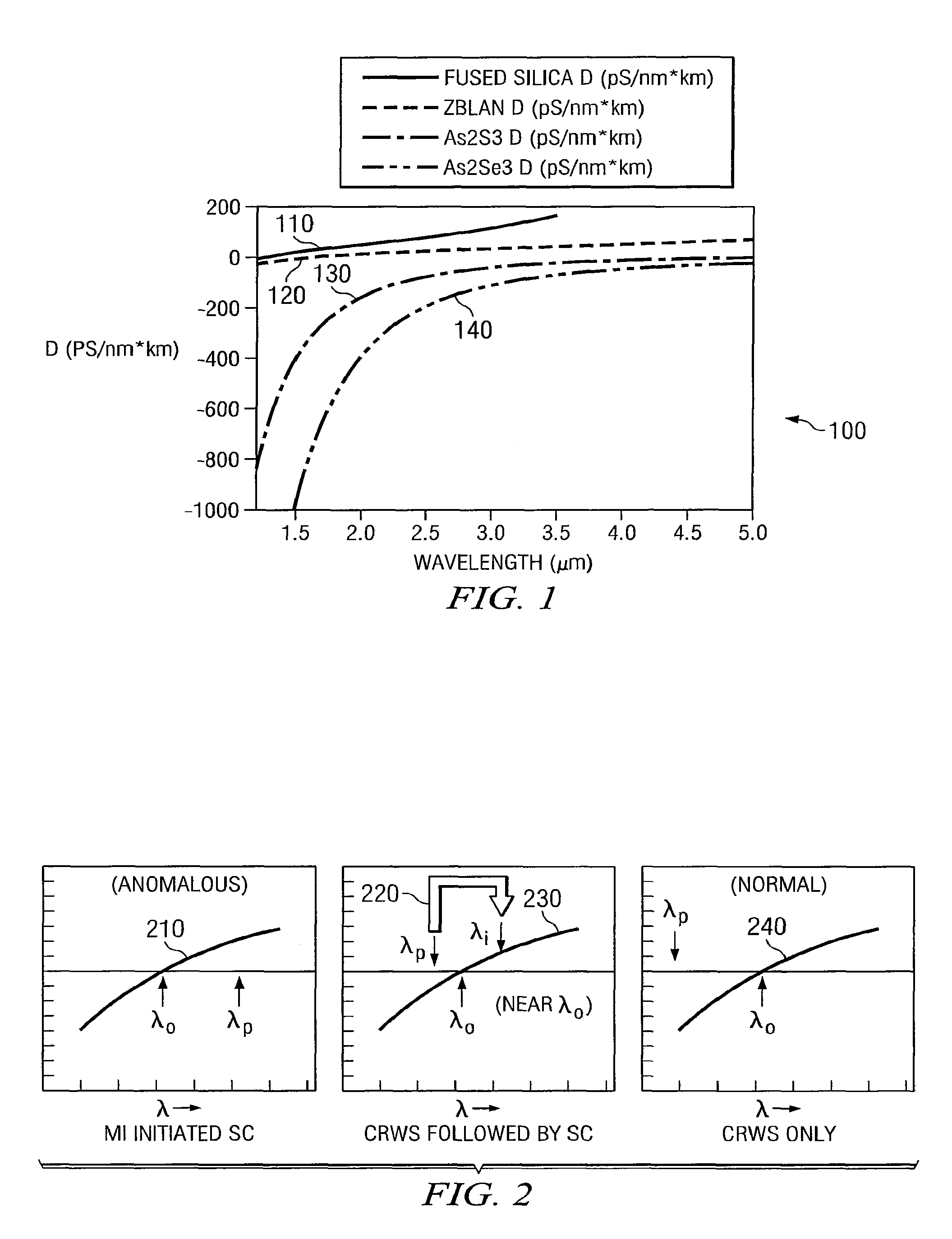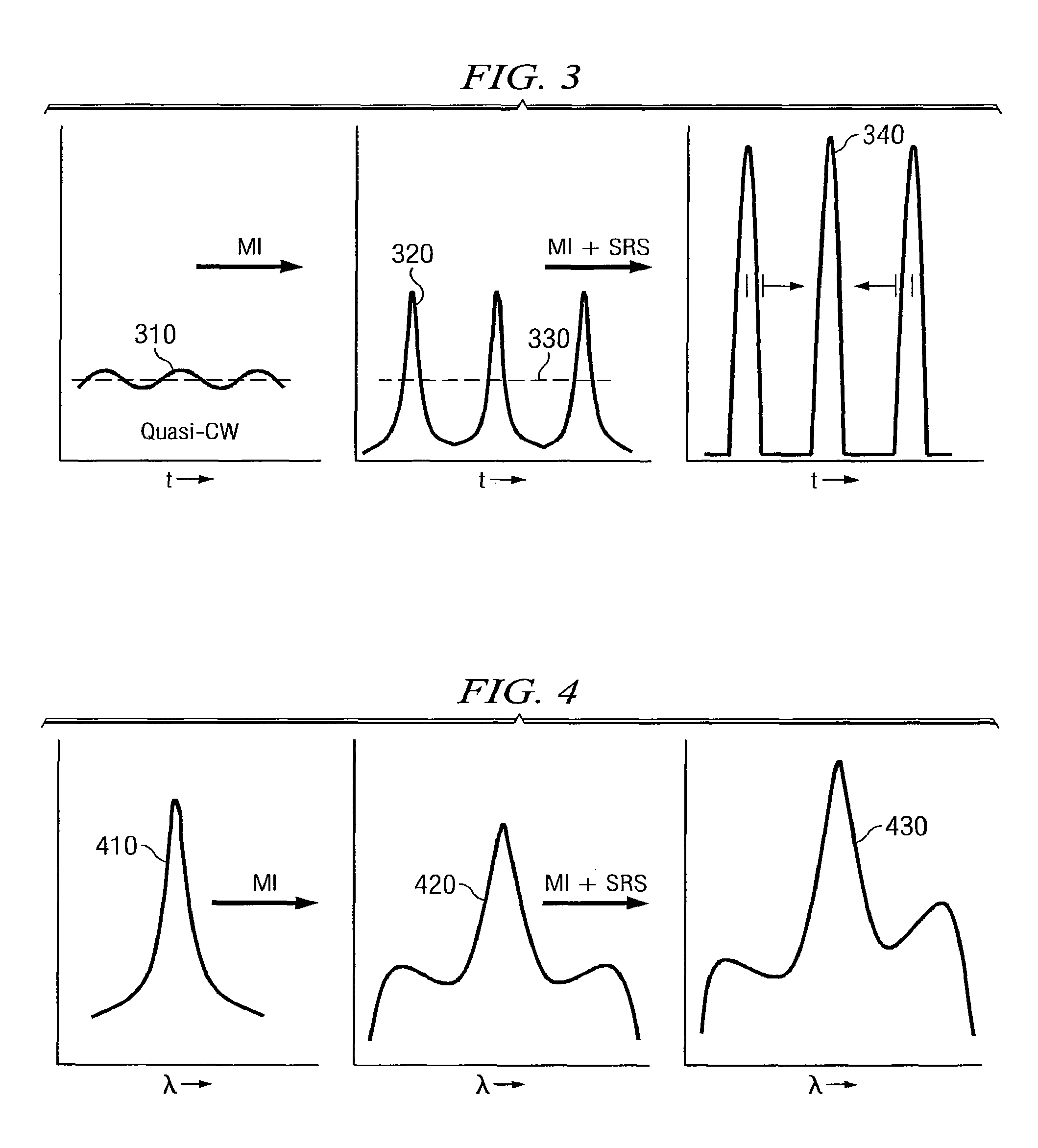Broadband or mid-infrared fiber light sources
a fiber light source and mid-infrared technology, applied in the direction of optical radiation measurement, instruments, spectrometry/spectrophotometry/monochromators, etc., can solve the problems of opos and opas being difficult to operate at wavelengths, affecting the efficiency of light sources, and opas being generally expensive and expensive, so as to reduce water absorption and increase power throughput and output power , the effect of broadening the input optical spectral width
- Summary
- Abstract
- Description
- Claims
- Application Information
AI Technical Summary
Benefits of technology
Problems solved by technology
Method used
Image
Examples
Embodiment Construction
[0042]As required, detailed embodiments of the present invention are disclosed herein; however, it is to be understood that the disclosed embodiments are merely exemplary of the invention that may be embodied in various and alternative forms. The figures are not necessarily to scale; some features may be exaggerated or minimized to show details of particular components. Therefore, specific structural and functional details disclosed herein are not to be interpreted as limiting, but merely as a representative basis for teaching one skilled in the art to variously employ the present invention.
[0043]Mid-IR light can be generated based on super-continuum in fused silica fibers and mid-IR fibers. Nonlinear waveguides other than fibers can also be used to generate the super-continuum. In one embodiment, SC has been demonstrated experimentally from ˜0.8 to ˜4.5 microns in ZBLAN fluoride fibers and from ˜0.9 to ˜2.8 microns in high-nonlinearity (HiNL) fused silica fiber. The SC originates f...
PUM
 Login to View More
Login to View More Abstract
Description
Claims
Application Information
 Login to View More
Login to View More - R&D
- Intellectual Property
- Life Sciences
- Materials
- Tech Scout
- Unparalleled Data Quality
- Higher Quality Content
- 60% Fewer Hallucinations
Browse by: Latest US Patents, China's latest patents, Technical Efficacy Thesaurus, Application Domain, Technology Topic, Popular Technical Reports.
© 2025 PatSnap. All rights reserved.Legal|Privacy policy|Modern Slavery Act Transparency Statement|Sitemap|About US| Contact US: help@patsnap.com



